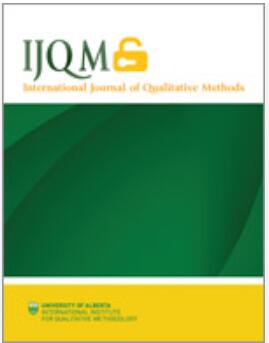Engaging Children in Intervention Development – A Comparison of Four Qualitative Methods and Their Suitability to Elicit Information Relevant for Early Intervention Development
IF 3.8
2区 社会学
Q1 SOCIAL SCIENCES, INTERDISCIPLINARY
引用次数: 0
Abstract
Stakeholder involvement in intervention development has become increasingly popular and is understood as crucial for successful implementation. However, methodological difficulties persist regarding the implementation of appropriate participatory methods to engage children and collect relevant information for intervention development. This paper discusses four creative, qualitative methods – a brainstorming task, an individual letter, a story-based task, and a focus group task – and compares their suitability to generate relevant information for early intervention development. These four methods were used in the early stages of a project aiming to develop a peer relationship intervention and were analysed using thematic analysis. Based on theoretical considerations, information categories (a) definition aspects, (b) context factors, and (c) change mechanisms were of interest, while (d) examples and experience and (e) additional information were identified as prevalent categories through inductive thematic analysis. Definition was a prevalent theme generated by the brainstorming task, although the sticky note format limited the depth of individual answers. The secret letter, which allowed children to share ideas privately, was found to be useful for generating more in-depth reflections on definitions and personal experiences. Stories and focus group discussions were found to be useful for generating varied context factors and change mechanisms, although stories also generated fictional elements and external solutions. Providing different qualitative methods and allowing children to choose how they prefer to communicate their thoughts proved important for collecting authentic, in-depth information.让儿童参与干预发展-四种定性方法的比较及其对早期干预发展相关信息的适用性
利益相关者参与干预措施的制定已变得越来越普遍,并被认为是成功实施的关键。然而,在实施适当的参与性方法以吸引儿童参与和收集有关信息以促进干预发展方面,方法上的困难仍然存在。本文讨论了四种创造性的定性方法——头脑风暴任务、个人信件、基于故事的任务和焦点小组任务——并比较了它们在为早期干预发展产生相关信息方面的适用性。这四种方法在一个旨在发展同伴关系干预的项目的早期阶段使用,并使用主题分析进行了分析。基于理论考虑,信息类别(a)定义方面,(b)背景因素,(c)变化机制,而(d)例子和经验以及(e)附加信息通过归纳主题分析被确定为流行类别。定义是头脑风暴任务产生的一个普遍主题,尽管便利贴的格式限制了个人答案的深度。这封让孩子们私下分享想法的密信,被发现有助于产生对定义和个人经历的更深入思考。研究发现,故事和焦点小组讨论有助于产生各种情境因素和变化机制,尽管故事也会产生虚构元素和外部解决方案。事实证明,提供不同的定性方法,让孩子们选择他们喜欢的交流方式,对于收集真实、深入的信息很重要。
本文章由计算机程序翻译,如有差异,请以英文原文为准。
求助全文
约1分钟内获得全文
求助全文
来源期刊

International Journal of Qualitative Methods
SOCIAL SCIENCES, INTERDISCIPLINARY-
CiteScore
6.90
自引率
11.10%
发文量
139
审稿时长
12 weeks
期刊介绍:
Journal Highlights
Impact Factor: 5.4 Ranked 5/110 in Social Sciences, Interdisciplinary – SSCI
Indexed In: Clarivate Analytics: Social Science Citation Index, the Directory of Open Access Journals (DOAJ), and Scopus
Launched In: 2002
Publication is subject to payment of an article processing charge (APC)
Submit here
International Journal of Qualitative Methods (IJQM) is a peer-reviewed open access journal which focuses on methodological advances, innovations, and insights in qualitative or mixed methods studies. Please see the Aims and Scope tab for further information.
 求助内容:
求助内容: 应助结果提醒方式:
应助结果提醒方式:


